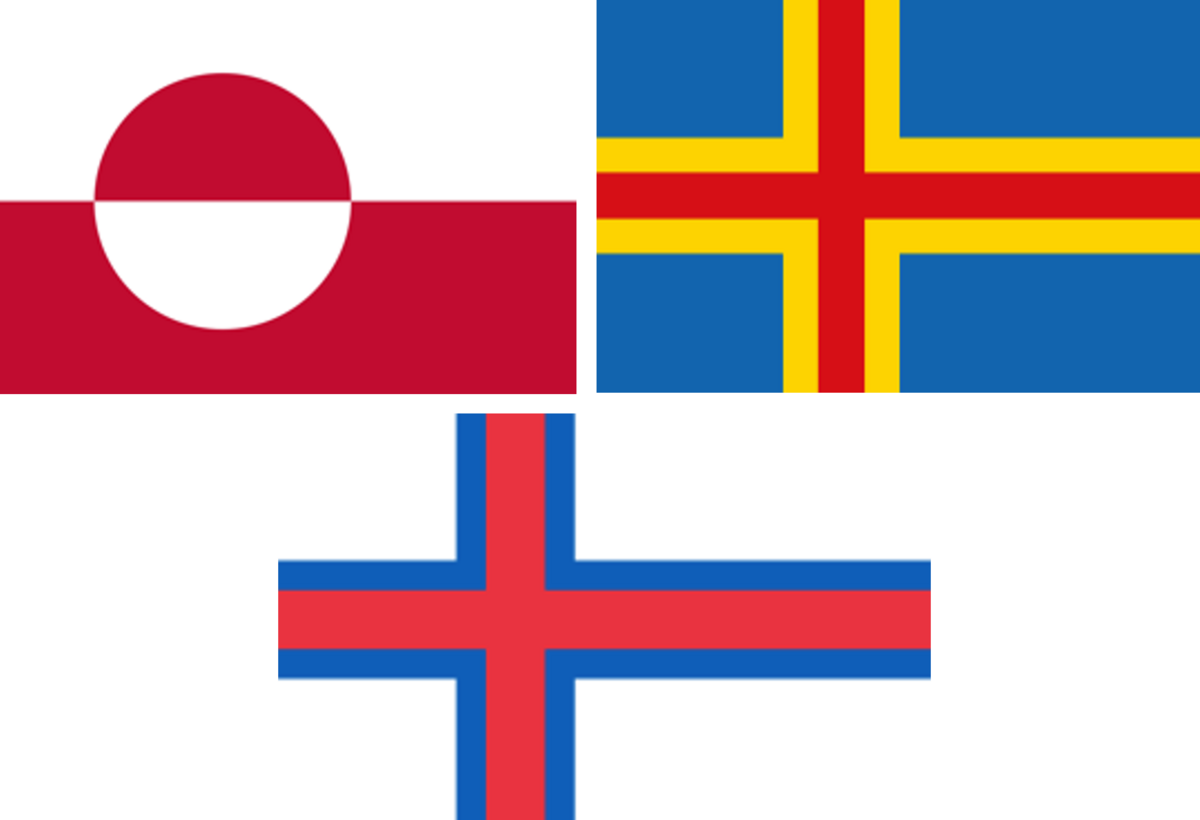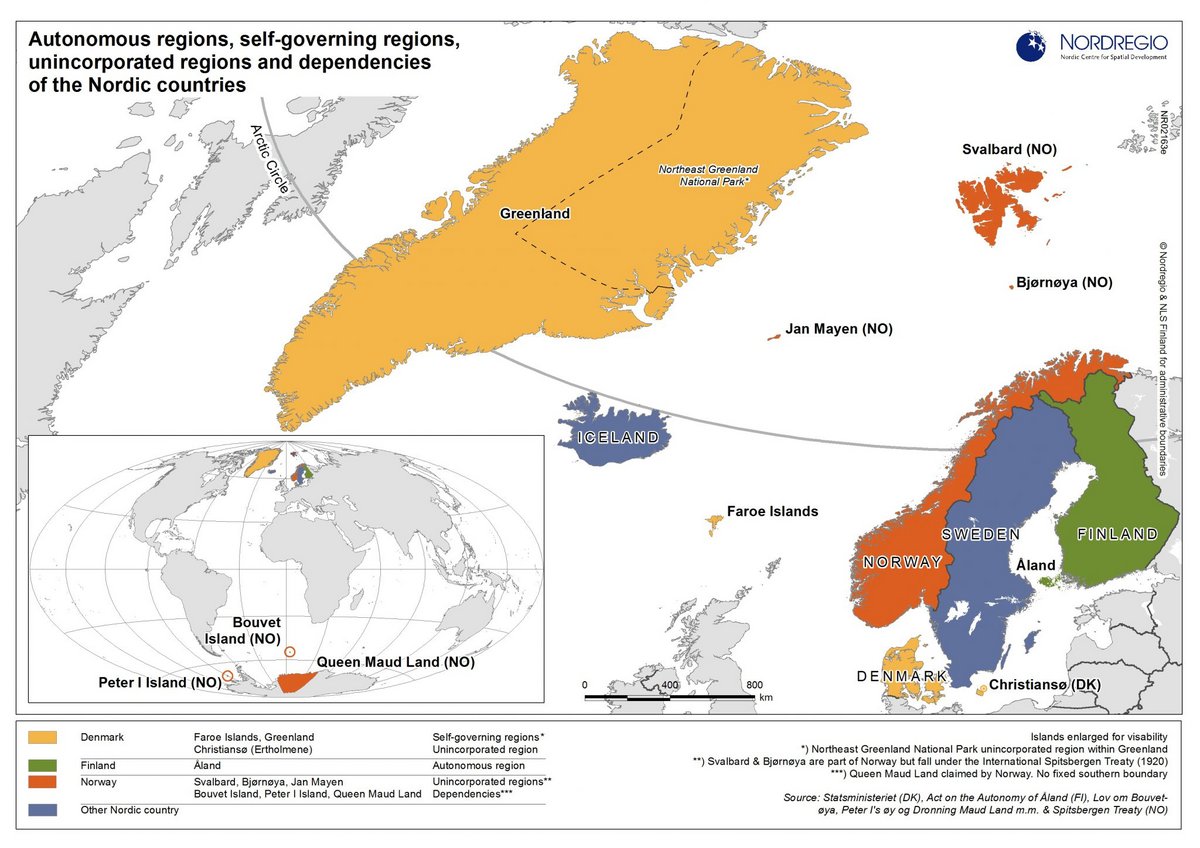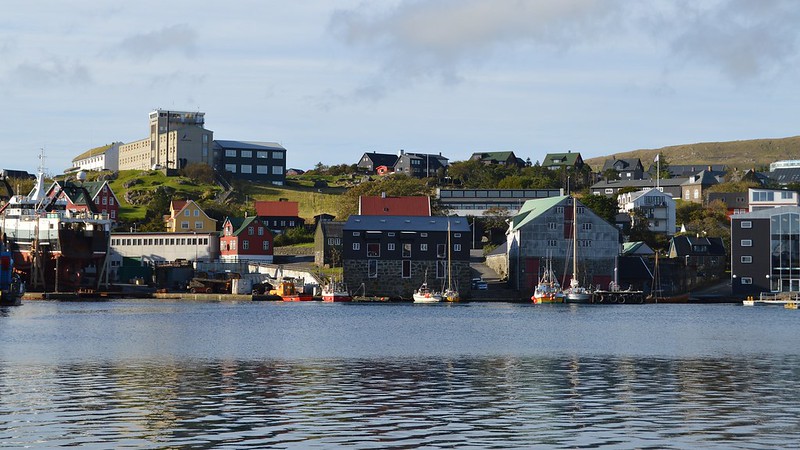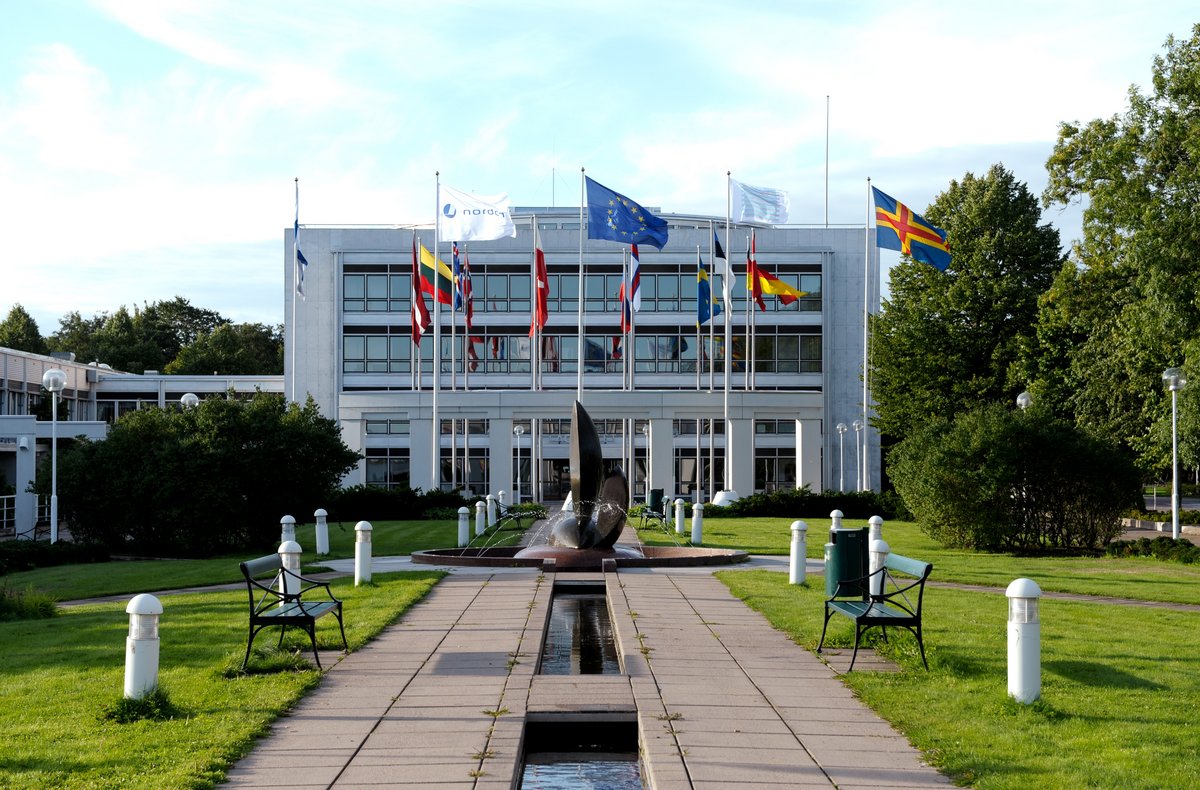The role of the autonomous territories in Nordic cooperation
There are three autonomous regions in the Nordic countries: Greenland and the Faroe Islands are part of Denmark, and the Åland Islands are part of Finland. Since the Nordic Council was established in 1952 and the Nordic Council of Ministers in 1971, these regions have found ways of having their say in the formal arena of Nordic cooperation - but some argue their voices are still not sufficiently heard.

Establishing representation on the Nordic Council and the Council of Ministers
Even before the autonomous regions secured seats on the Nordic Council, they had representation of a sort via the national delegations of Denmark and Finland. The Åland Islands gained self-rule in 1921 and the Faroe Islands in 1948. However, it was not until 1971 that the Faroe Islands was granted two seats and the Åland Islands one seat on the Nordic Council, but these seats were granted as a part of the Finnish and Danish delegations respectively. This came about as the Faroese government put forward a motion for official participation in the Nordic Council - which it had to do formally through Denmark as it was not a direct party at the time. A committee (the Kling committee) was tasked with investigating the issue, which ultimately led to a change in the founding statute on Nordic cooperation, the Helsinki Treaty. Greenland was not included at that time; it did not gain self-rule until 1979.
In 1971, the inter-governmental Nordic Council of Ministers was established and the Faroe Islands and Åland Islands were able to send observers to its meetings.
In 1980, Denmark submitted a proposal to the Nordic Council requesting independent representation of the Faroe Islands, Åland Islands and Greenland at Council level, as well as an opportunity to participate in the work of the Nordic Council of Ministers. Another committee was set up (the Petri Committee) and this led to each of the autonomous regions having two representatives each on the Nordic Council. But these representatives were still included in the country delegations of which they were a part, namely, Denmark in the case of Greenland and the Faroe Islands, and Finland with respect to the Åland Islands, an arrangement referred to as ‘double delegations’. The number of seats in the Council was increased to 87 at the same time to allow for the extra members (Denmark, Norway, Sweden, Iceland and Finland have differing numbers of representatives on the Council ranging from between seven and 20). This remains the situation today, with the representatives of the autonomous territories not being on an equal footing with the High Contracting Parties (that is, Denmark, Norway, Sweden, Iceland and Finland). However, representatives from the autonomous regions are free to represent their national delegation on a committee or otherwise. For example, Kristina Háfoss is from the Faroe Islands and formally represents Denmark in her position as Secretary General of the Nordic Council, a position which she took up in February 2021.

Importantly, following the Petri Committee’s report, the autonomous regions began participating directly in decision-making on issues concerning their territories. It is customary that the autonomous regions choose which issues they consider relevant to their regions and when they want to opt in. Additionally, representatives from the autonomous regions were from then on able to hold positions within the Nordic Council of Ministers, atlhough they officially represent the country of which their autonomous region is a part, the full member, instead of their particular autonomous region.
A limit to representation within formal Nordic cooperation
The latest revision round was initiated in 2005 after the Faroese delegation submitted a proposal to the Nordic Council and Nordic Council of Ministers requesting full membership, and a working-group was set up to look into the matter. The outcome was a report called the Åland document (Ålandsdokumentet), published in 2007, that scoped the autonomies’ participation in the work of the two institutions. From the outset, full membership was once more rejected as an option even though it was the main demand of both the Faroe Islands and Greenland. The Åland Islands was less assertive in its demands, although it emphasized the desire to be represented independently in the two institutions. The suggestions made by the working group did not require legal amendments in the Helsinki Treaty but proposed practical solutions for enhancing the participation of the autonomous regions. The actual improvements to the autonomous regions’ status through the Åland document remained modest and diverged greatly from the original wishes of the autonomous regions.
Some think that these arrangements do not go far enough and the autonomous regions should have a greater voice in the formal cooperation of the Nordic countries. Full membership appears to remain out of reach for the three areas despite efforts to gain further participation. While the latest revision round changed little in terms of accommodating the autonomies’ demands, it has undoubtedly left room for future negotiation on the issue.
Further reading:
- Katja Creutz and Sia S. Åkermark, ‘The Faroe Islands, Greenland and the Åland Islands in Nordic Cooperation’, Finnish Institute of International Affairs (2021).
- Sarah Stephan, ‘Making Autonomies Matter: Sub-State Actor Accommodation in the Nordic Council and the Nordic Council of Ministers: An Analysis of the Institutional Framework for Accommodating the Faroe Islands, Greenland and Åland within ‘Norden’’, European Diversity and Autonomy Papers, 3 (2014), pp. 5-41.
Links:
- Ålandsdokumentet (The Åland document)
- Nordregio’s website

